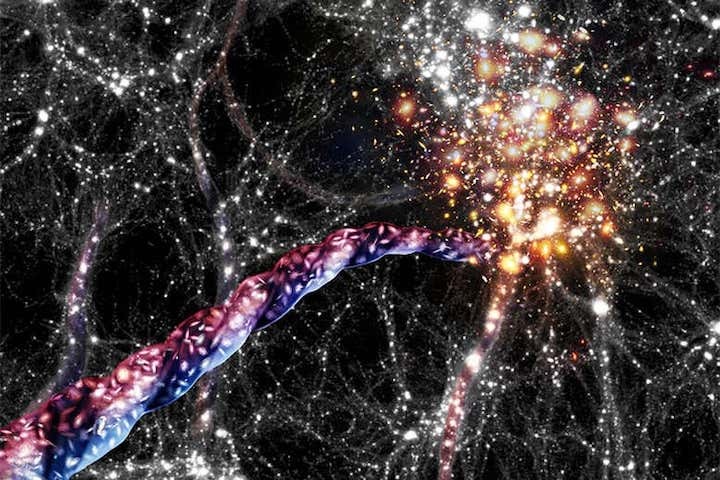16.06.2021

Colossal filaments that collect together clusters of galaxies seem to be rotating
AIP/A. Khalatyan/J Fohlmeister
Some of the largest structures in the universe appear to be rotating. The filaments of galaxies forming the cosmic web that stretches between galaxy clusters seem to be spinning, which could help us figure out why galaxies themselves – and everything else in space – rotate.
How rotation is generated in space is a long-standing problem in astrophysics. “Not only are the galaxies spinning, but also the stars within the galaxies, and the Earth is spinning, and the Earth around the sun and the moon around the Earth. Pretty much the whole universe is spinning,” says Noam Libeskind at the Leibniz Institute for Astrophysics Potsdam in Germany. “We don’t really know why, and one way to try to answer that is to figure out where the spinning stops.”
Previous research has suggested that clusters of galaxies may be the end of the road for spinning, but Libeskind and his colleagues have found that isn’t the case. They used data from the Sloan Digital Sky Survey to examine the colossal filaments of galaxies that make up the cosmic web, which stretch across hundreds of millions of light years, and found that they are rotating.
We cannot measure rotation directly on such large scales, so the researchers looked for patterns in the galaxies moving towards or away from Earth. When most of the galaxies on one side of a filament were moving away from us and most on the other were coming towards us, that indicated that the whole filament was rotating. Some of these gigantic strands of galaxies were spinning at nearly 100 kilometres per second.
As the galaxies orbited the centres of their filaments, they also fell towards the galaxy clusters that mark the ends of each strand. “These galaxies are moving on these corkscrew-like, helical orbits,” says Libeskind. The filaments that ended at more massive clumps of galaxies seemed to rotate faster, but it isn’t yet clear why. More work will be required to answer that question, as well as the question of how the filaments’ rotation affects the spins of the galaxies themselves.
Quelle: NewScientist
